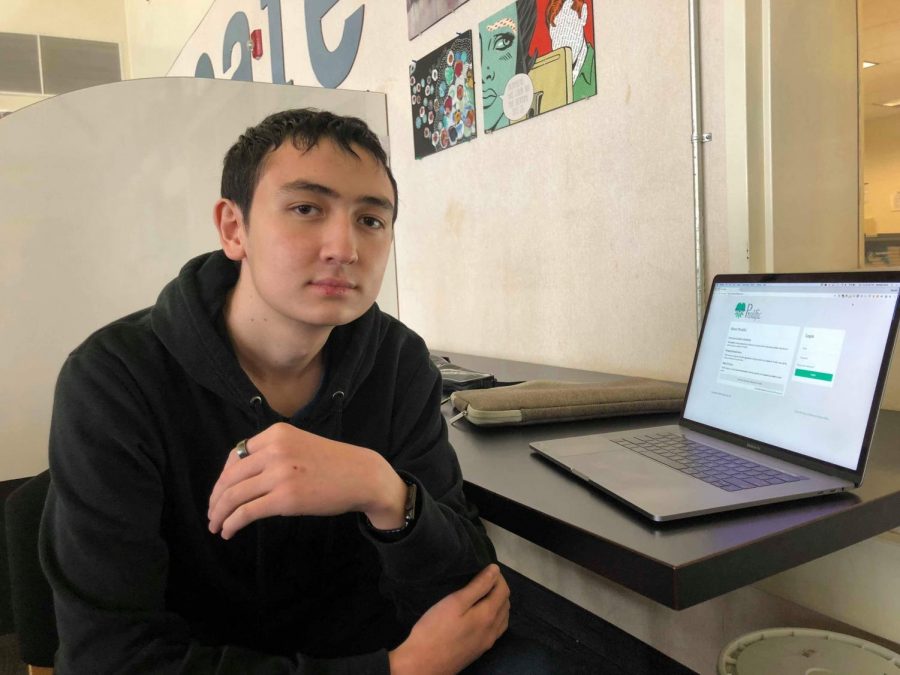Creating a Digital English Classroom with Prolific
March 21, 2018
Programs like Google Classroom and Actively Learn have become widespread in education, often developed by software engineers who work on the websites full-time. Junior Kendall Goto, on the other hand, has already developed his own educational writing program, Prolific Edu, LLC, with the intention of improving students’ writing skills.
The website has already been used by 120 students at Los Altos. Kendall’s program differs from websites like Google Classroom as it was developed with the exclusive purpose of creating writing prompts. Prolific allows students to post their written work online, available for other peers to offer feedback.
“On Google Classroom the assignment is there, and while it’s a great way to get the assignment out electronically, Prolific allows the kind of communication that is done at the college level about work even outside of class,” English teacher Susana Herrera said. “Kendall is able to give kids an in-service on how to use it and help me if I ever run into problems.”
English teacher Michael Smith and Herrera’s freshman classes have piloted Prolific for students to share poetry and essays for the purpose of peer editing. Smith used it for his two freshman classes during first semester and will continue its use in the future if it is approved for school use, citing how intuitive it is to use for students and teachers alike.
“By publishing writing online, you leave it for anyone to critique and Prolific is fulfilling that,” Smith said. “Rather than just saying ‘that sucks,’ students have academic conversations and that to me is true learning.”
The idea behind Prolific came from a lack of available writing drills and practice in high school English classes. Prolific was based around Kendall’s reflection on middle and elementary years where students would journal daily, allowing them to see steady improvement between writing assignments.
“I wanted to bring an environment that allowed peers to get involved and drastically improve each other’s work without adding that much overhead for the teacher,” Kendall said.
More than an online resource, Prolific aims to foster connections between classmates. By forging relationships with each other, students can engage in more productive conversations because they feel comfortable sharing their input.
Kendall viewed activities like Socratic Seminars or one-on-one peer discussions as forced, and believed that technology could break the ice through peer connection. Freshmen, Kendall said, are often in a class filled with unfamiliar faces and are too shy to speak their opinions, which leads to the same kids voicing their ideas. Prolific doesn’t replace human interaction but helps foster it by leading online discussions that translate into real-life conversations.
“We’re spending a lot of time connecting with people digitally and we can relate to that experience [more] than this more awkward forced one-on-one human contact experience,” Kendall said. “Person-to-person communication is valuable in building skills but more valuable in environments where students can connect more in more intimate settings. In larger environments, discussions prove to be a waste of time because kids lose their voice.”
Much of Prolific is based around student and teacher feedback. Because Kendall works in close proximity with those who use his project, he can see his users’ experiences and make modifications accordingly. For example, after receiving feedback from a teacher who wanted a more open-ended collaborative learning environment, Kendall added a feature that allows students to freewrite without a prompt. The poetry rhyme and syllable counting tool was added from student input, and even the color scheme of black on white compared to the previous white on black was a recommendation.
“Say a teacher or student needs this feature right now, I can put that out, that’s something unique that something like Google Classroom can’t really do,” Kendall said. “They can’t take feedback and immediately say ‘We need this.’ A lot of teachers have had issues with Google Classroom where they want it to do something it just can’t do, so being able to work in a classroom environment is super unique.”
The advantage of being a student and seeing how his program functions is valuable to the development of Prolific. Before he graduates, Kendall hopes to expand his program and work outside the subject of English to increase the accessibility of the website to middle and elementary schools. He believes that the changes of moving schools are difficult enough to adjust to and if Prolific is used in the MVLA district, it will be less difficult for students to transition to the unfamiliarity of middle and high school.
“I want to improve Prolific as much as possible before I go off to college,” Kendall said. “If a teacher sees the system and legitimately thinks, ‘This is something I need in my class,’ I want to hear their feedback before I leave.”
Check out Prolific for yourself at https://www.prolificedu.com/





Mr. Barker | Apr 19, 2018 at 7:56 am
I remember when this was just an idea Kendall had. It is gratifying to see it come to fruition. This kind of ground-up, organically created software is the best and maybe only antidote to irrevocably forfeiting our educational paradigms to monolithic corporations who will always be, by definition, more self-interested than they are in improving the learning experience. Onward, Kendall.